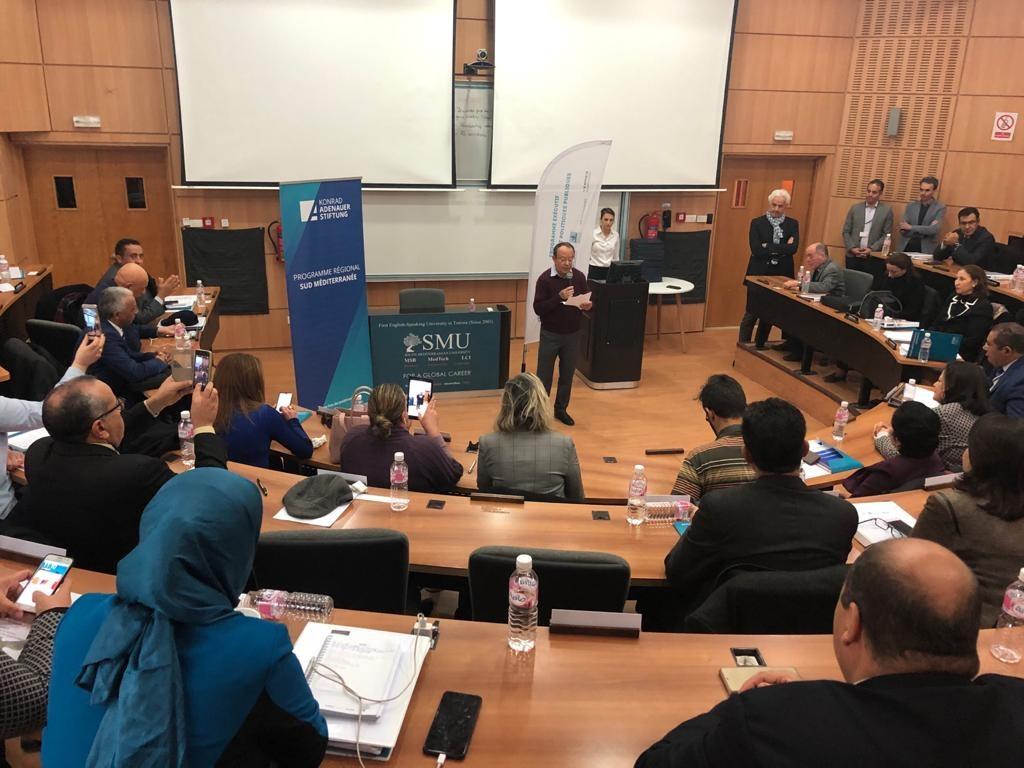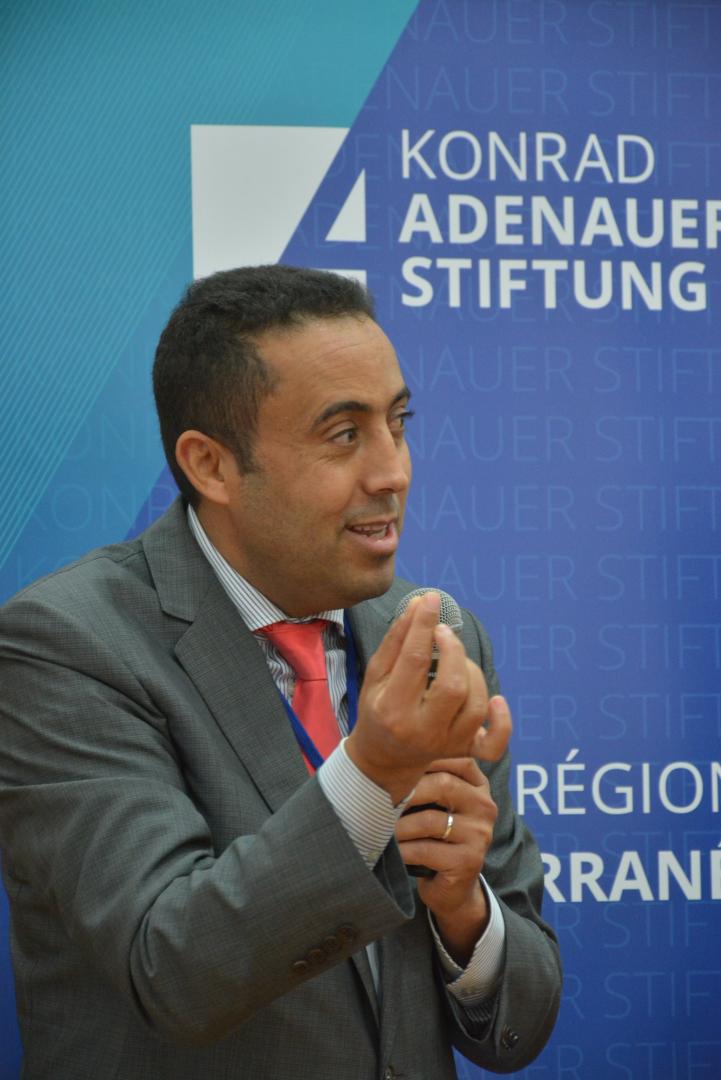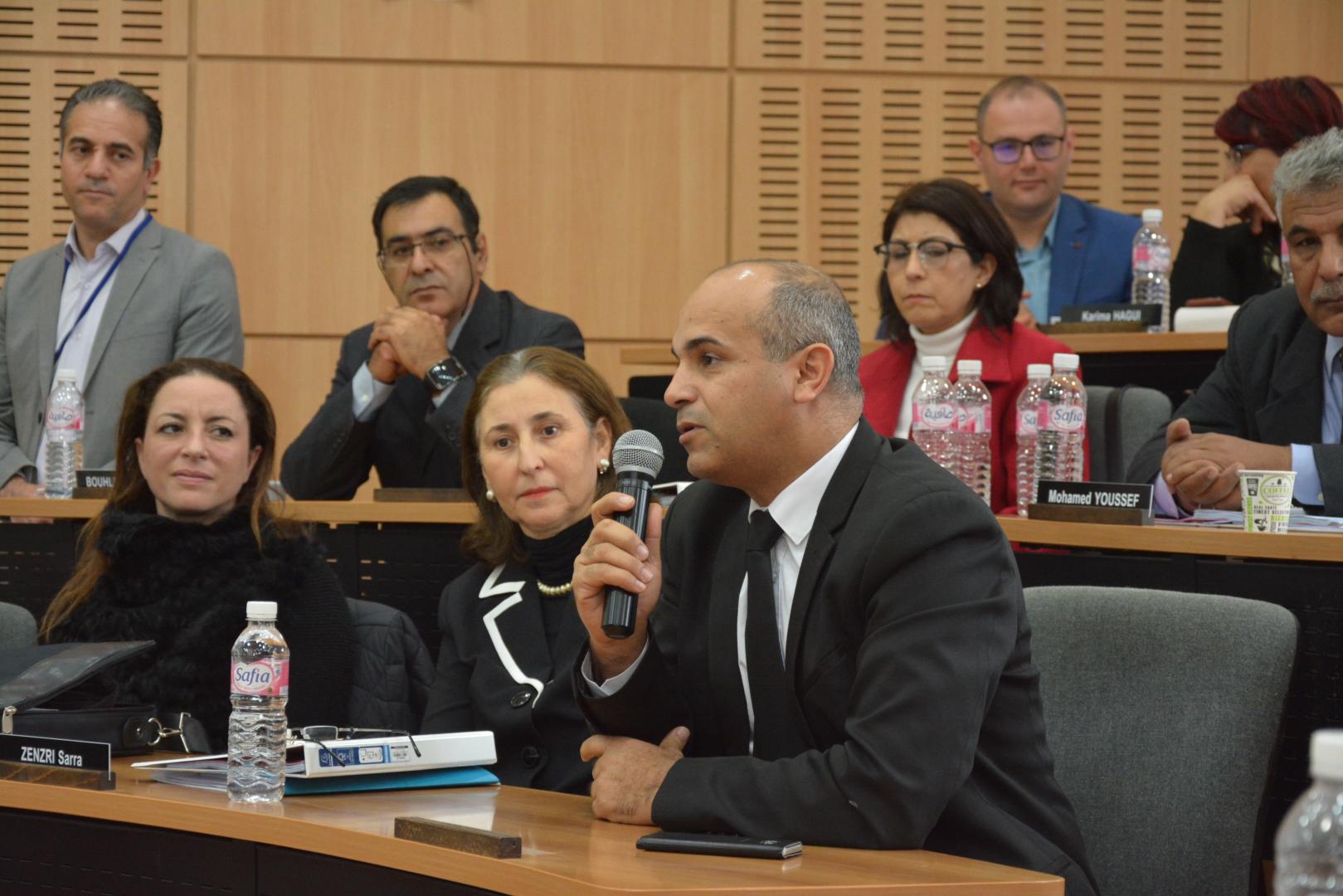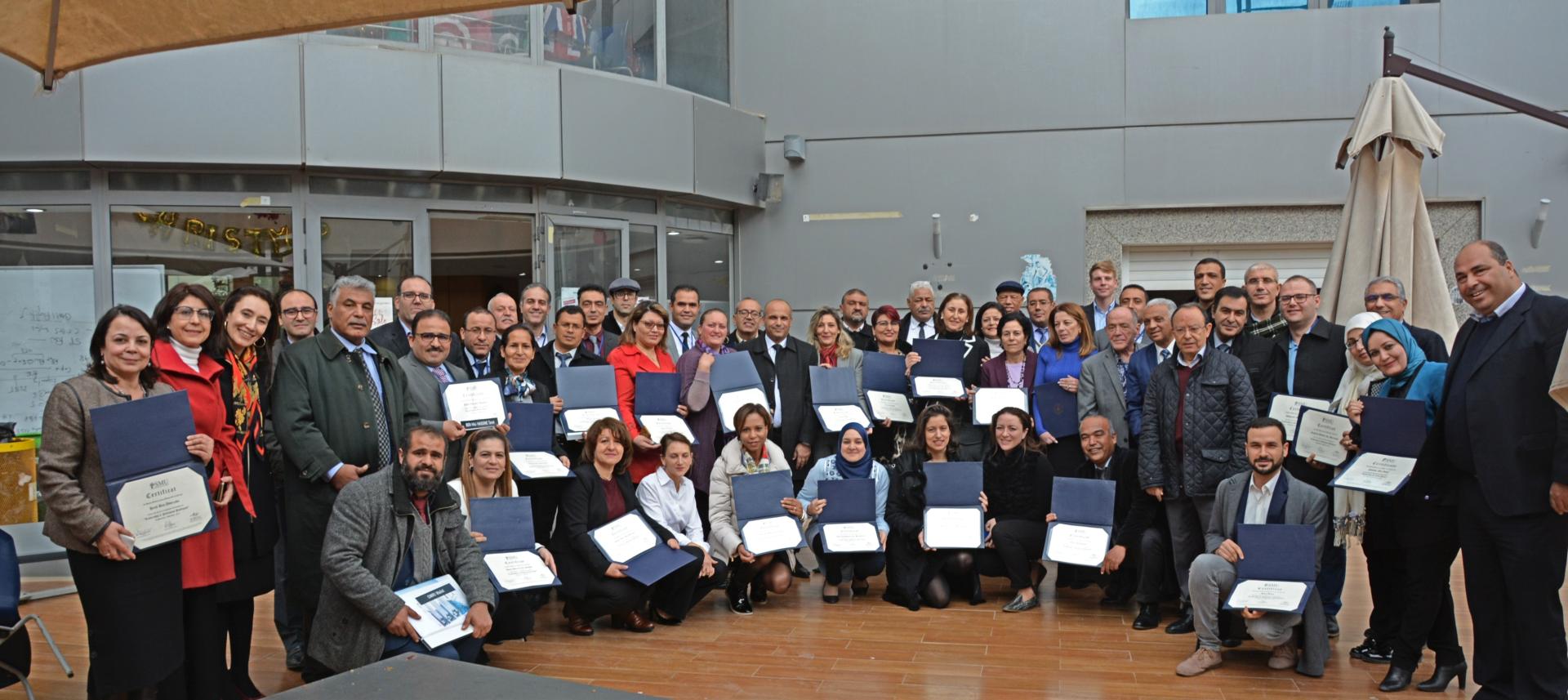The first module of the training program took place at the SMU from September 23rd through September 27th. There were 16 sessions in total, during which the trainers, Mr. Hedi Larbi and Mr. Tahar Abdessalem, presented the state of development economics and growth strategies in the last 50/60 years, laid out the economic and social challenges to North Africa’s development, their local, regional and global political and institutional environment, and how these challenges can be addressed in light of recent knowledge on development. The trainers presented the most commonly used methods in economic analysis to evaluate and prioritize public investments in order to inform policy decisions and ensure optimal use of public resources, particularly in a context of budget constraint. The limits and challenges of each method were examined and illustrated by examples of planned investment projects in different countries.
The second module took place at the SMU from October 21st through October 25th. There were 13 sessions in total, during which the trainers presented Bardach’s Eightfold Path to policy analysis, with a focus on: how to generate policy options or construct alternative courses of action or alternative strategies of intervention to address a policy issue. Participants also learned how to project the outcomes of different policy alternatives, define and select criteria to evaluate policy outcomes, and compare policy options. Subsequent sessions focused on ex-ante evaluation and comparison of alternatives and identification of “trade-offs or choices to be made” in light of the benefits/results associated with each of the alternatives. One session was devoted to tips and techniques for writing a well-structured, clear and compelling public policy report/note/brief. Three sessions were dedicated to impact evaluation, starting with an overview of key concepts and instruments before delving into impact evaluation methods, including randomized methods of experimentation, difference in difference analysis, discontinuity regression methods, methods of instrumental variables and matching methods. The entire approach to policy analysis and the evaluation methods studied were then put into practice by applying them to concrete examples through case studies.
The third module at the SMU from November 11th through November 15th. There were 11 sessions in total. The first sessions sought to enhance methods of analysis of the interactions between political and economic spheres and their impact on economic decisions: mapping of stakeholders and analysis of their intervention strategies on public decisions, the constraints of the Agent-Principal relationship in public action, the limits of collective action, and the techniques of forming coalitions. The following sessions intended to provide participants with basic macroeconomic concepts, and lay out the key elements of sound fiscal and monetary policies. The interconnections between the two, as well as their interpretation, and practice by policy-makers were thoroughly discussed. Case studies of thematic and sectoral public policies were discussed to illustrate the methods of analysis presented in the previous modules. The selected cases relate to the following topics: how to reform education for better quality; social protection policy and the role of social assistance in this policy; decentralization and institutional experimentation; fighting corruption and the importance of leadership and quality regulatory frameworks; and the political economy of pensions (case of Tunisia). The final session was devoted to in-depth discussion of the interactions between fiscal and monetary policies and the tools needed to properly coordinate these policies. A case focusing on financing policies of budget deficit was examined to familiarize participants with the tools and models for estimating the effects of macroeconomic policies and potential application in Tunisia as an example.
The fourth module took place at the SMU from December 9th through December 13th. There were 12 sessions in total. The first section focused on how the political economy context affects public policy choices and decisions and provides a practical approach to understanding the political economy environment in question (actors, motivations, mechanisms of intervention or influence, etc.) and how to take them into account in the design and implementation of reforms / changes. The following section was devoted to techniques and methods to develop the capacity of strategic thinking, recalling basic concepts and attitudes that promote strategic thinking, and emphasizing the importance of critical thinking as one of the distinguishing features of good strategists and problem solvers. A concrete case study illustrated the distinction between strategic planning and strategic thinking. The following section focused on the role of public leadership in driving change and reforms (from design, to adoption to implementation). The main questions addressed include: What are the main qualities and characteristics of strong public leadership? What role should leadership have in a reform process? How does this role differ from that of an effective manager? How to promote a culture of efficiency and reduce the resistance to change of public, private or social actors? An illustration was made through a case study on the leadership development strategy of Nelson Mandela.










